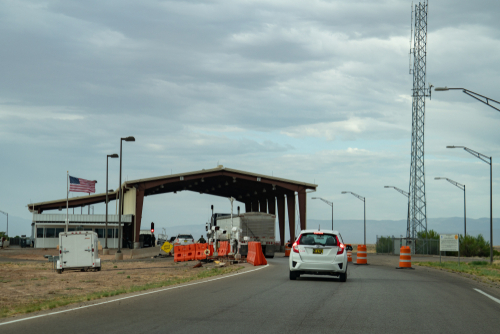
In a bid to increase screening of vehicles and cargo at U.S. ports of entry, U.S. Sens. Gary Peters (D-MI) and John Cornyn (R-TX) reintroduced their Non-Intrusive Inspection Expansion Act this week.
Generally, the bill would require U.S. Customs and Border Protection (CBP) to increase use of non-intrusive inspection systems for outbound scanning of vehicles. On the entry side, it would require at least 40 percent of passenger vehicles to be scanned and at least 90 percent of commercial vehicles, all by the end of fiscal year 2026.
“Non-intrusive inspection systems are effective tools that enable Customs and Border Protection Officers to securely facilitate legitimate trade and travel at our ports of entry,” Peters, chairman of the Homeland Security and Governmental Affairs Committee, said. “Increasing the scanning rate of non-intrusive inspection systems at land ports of entry will strengthen our border security by helping these dedicated officers better identify contraband, and better protect our communities from illicit drugs like fentanyl, while also enabling CBP to efficiently process legitimate commerce that keeps our economy moving.”
The bipartisan pair are particularly concerned about the spread of synthetic opioids such as fentanyl, and stated that non-intrusive inspection systems help CBP to find these drugs before they can reach and harm American communities. In FY 2022, CBP interdicted more than 100,000 pound of illicit drugs through use of these technologies alone, on top of other undeclared and prohibited goods.
“Texas is the top exporting state in America, and more than $230 billion in goods is transported between Texas and Mexico alone each year,” Cornyn said. “By expanding the use of non-intrusive inspection technologies, this legislation would help CBP officers to efficiently examine cargo coming into and out of Texas while keeping our border secure.”
If the bill passes, CBP will need to brief Congressional committees on the progress of its scanning systems. However, if it were to fail to meet requirements established by the bill, it would still need to report to those committees, albeit on why it was unable to meet requirements and its plan for guaranteeing compliance going forward. Further, the agency would need to analyze and report the feasibility of scanning 10 percent of all outbound vehicles by the end of FY 2026.
Separately, the Government Accountability Office would be tasked with reviewing and reporting on CBP’s use of non-intrusive inspection systems for border security.




